Standing at 196 cm tall and weighing in at a monstrous 120 kg, the late, great Jonah Lomu showed the world that one man could unite a nation. During the 1995 Rugby World Cup, the best-of-the-best had no answer to the powerhouse, harnessing immense speed he steamrollered through broken defences and stamped his mark on history. Now another Kiwi underdog is standing against the global drivetrain superpowers. Will the new Zerode Taniwha be the heretic that ignites a revolution.
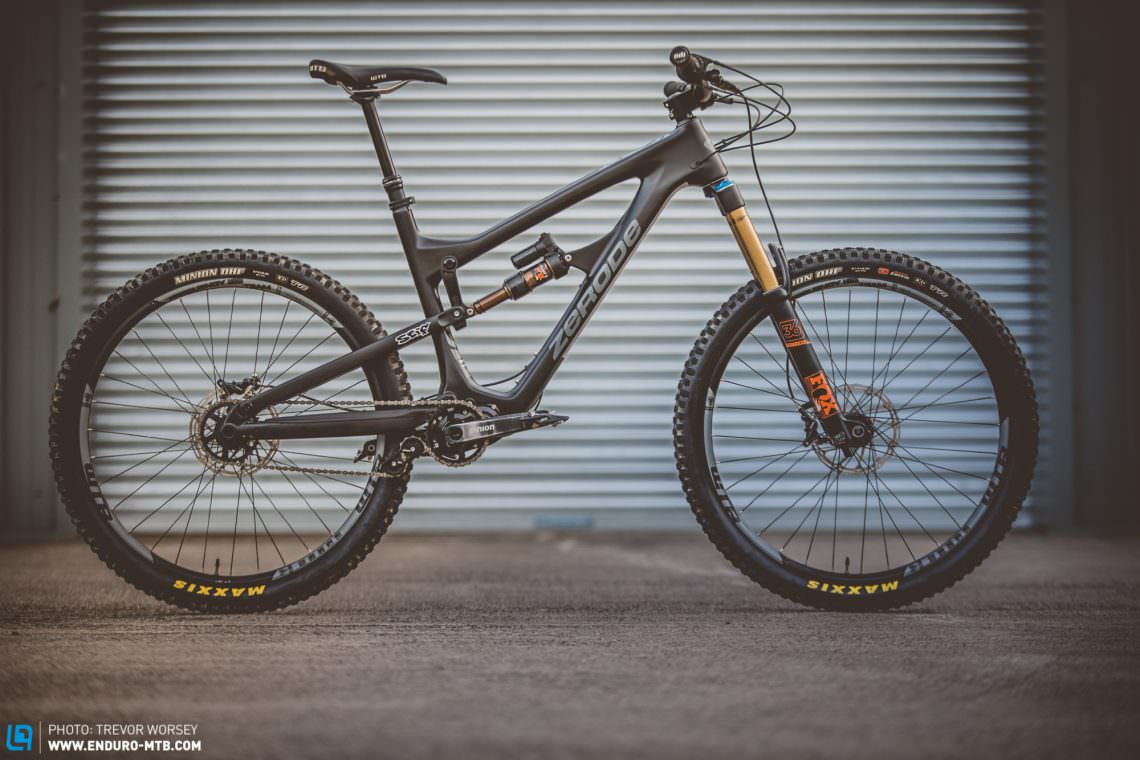
Gearboxes on bikes are nothing new. For many years they have appeared as a sideshow at tradeshows or novelties fitted to heavy, bespoke bikes. We admired them, proclaiming “That would be cool on a lighter bike” before moving on – gearboxes just could not gain traction. With the latest huge ranges offered by the best 1x drivetrains, such as SRAM Eagle, have gearboxes been all but forgotten? Enter the Taniwha, a full carbon 160 mm enduro bike from the small New Zealand bike company Zerode. The 15.2 kg Taniwha not only offers the huge range and rugged durability of the Pinion P1.12 gearbox, but also performance benefits that have never been seen on a derailleur bike.
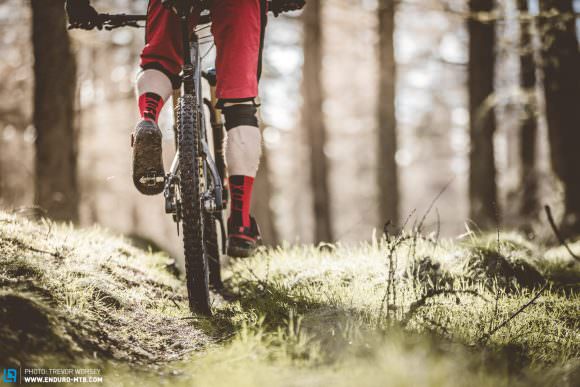

Zerode Taniwha in Detail
Fork: FOX 36 Float Factory
Shock: FOX Float X / X2
Brakes: SRAM Guide RSC 180 mm
Drivetrain: Pinion P1.12-Gearbox
Seatpost: KS LEV Integra 150 mm
Stem: Burgtec Enduro 50 mm
Handlebar: Burgtec Carbon Enduro 800 mm
Tyres: MAXXIS Minion DHF 2.35 EXO TR – 3C vorne/2C hinten
Wheels: Hope Pro 4/WTB Frequency Team i25
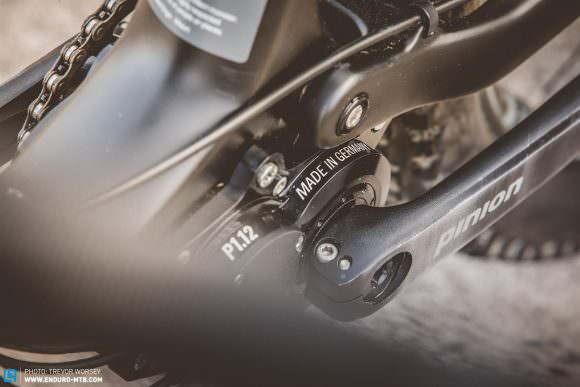
The sealed Pinion P1.12 gearbox makes drivetrain adjustments nonexistent: chains last for seasons, not months.
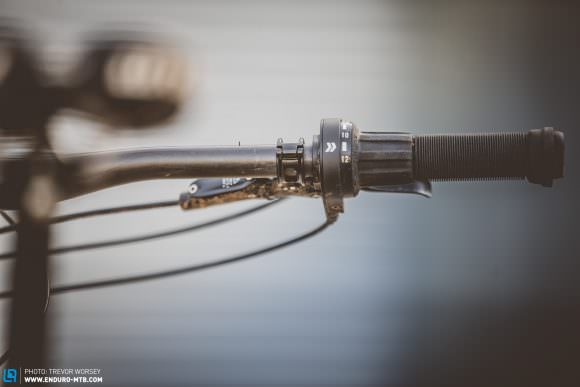
While the GripShift is precise and accurate, having to coast to shift slows down the blistering progress that the bike encourages.
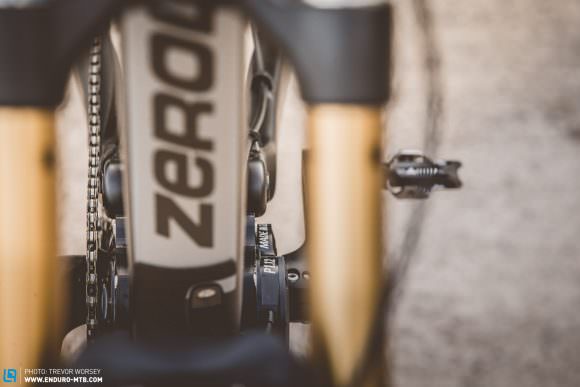
The Zerode Taniwha boasts a 600% range, more than any other 1x drivetrain on the market. No hill is too steep.
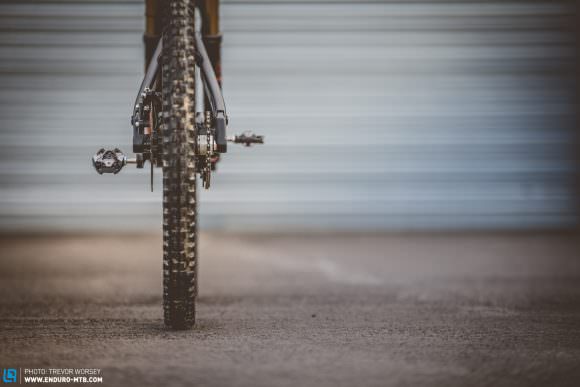
While the large was perfect for our 1.8 m tall test riders, the Taniwha is only available in medium and large frames, and the sizing is on the compact side. If you are tall, try before you buy.

While a gearbox may be heavier than a derailleur, moving weight away from the rear axle dramatically improves rear suspension action.
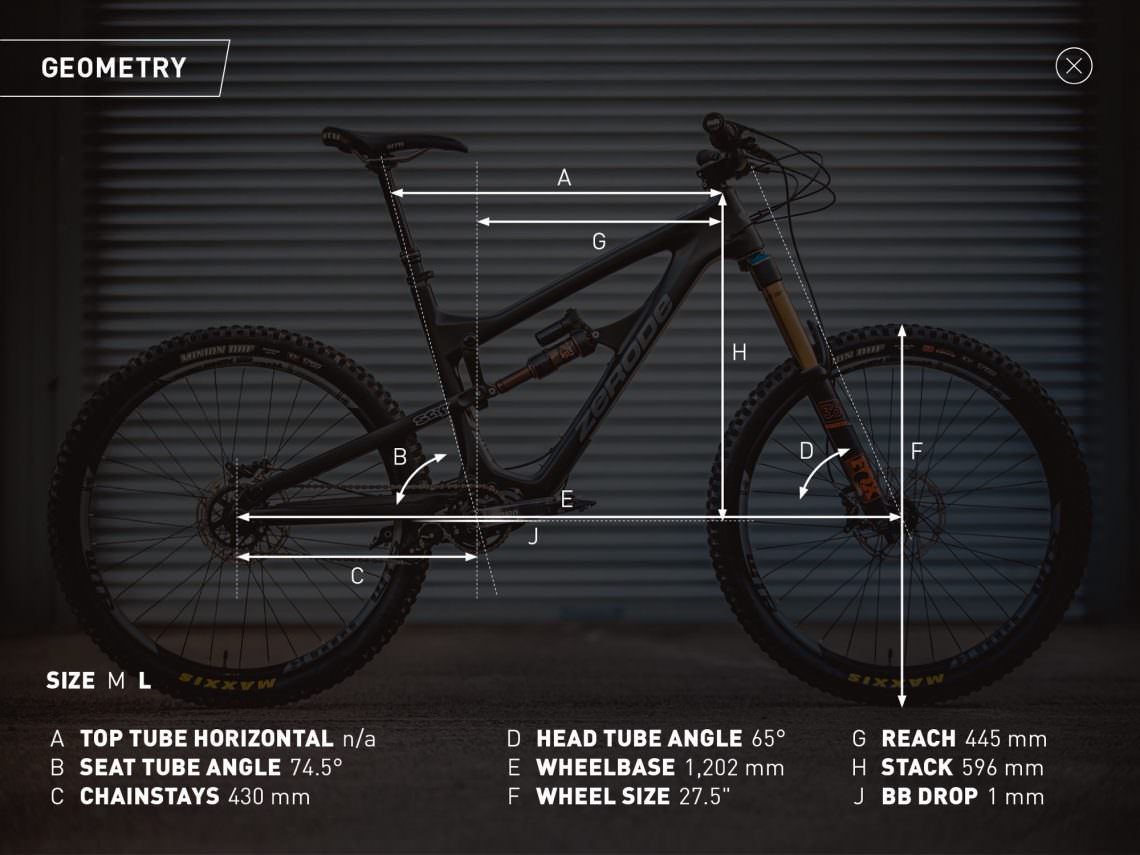
An underdog with bite
When it comes to range, the 12-speed P1.12 gearbox of the Zerode Taniwha is king: its 600% range is enough to leave any 1x drivetrain cowering in the shadows, even the mighty Eagle. Yes, the gearbox is heavier, but removing a 600 g lump of cassette and derailleurs from the rear wheel allows the suspension to react faster and with more control.
Moving weight from the unsprung rear axle to instead sit inside the bottom bracket makes perfect engineering sense, putting the centre of mass where it should be and improving balance. It’s stronger, too: the zero-dish singlespeed hub allows for a stronger wheel and offers a perfect chainline to reduce stress on the chain. The Taniwha is off to a good start before we have even turned the pedals.

When it comes to geometry, the Taniwha ticks all the ‘enduro’ boxes, with an aggressive 65o head angle and 430 mm chainstays – like beer and pizza, it’s a tried and tested formula. Compared to the latest “long and low” trend of the last year, the Taniwha’s wheelbase is perhaps playing it a little cautious. Currently only two sizes are available, medium and large. Our large test frame boasts a 74.5o seat angle for efficient climbing, with a reach of 445 mm and 800 mm Burgtec RideWide bars. Taller riders may find the riding position too compact and will have to wait for an XL bike, which we hear is on the way.

Embracing the witchcraft of Voodoo!
This is a bike that instantly attracts attention. Changing through the twelve speeds while stationary is nothing short of voodoo: silent and instant, with a mechanical precision that is more Porsche than Volkswagen. Gears can be shifted one at a time, or dumped right through the range using the GripShift shifter – trigger-lovers should know that the push/pull mechanics of the gearbox make fitting a trigger shifter complex, so currently it’s GripShift or nothing. When riding, unlike the ‘soft pedal’ shift of a derailleur, shifting the Pinion gearbox requires a momentary hesitation in power delivery, coasting for half a second while the chosen gear silently drops into place.
Try and force it under power and the shifter will not respond. At first this feels unfamiliar and requires thought, but after a few rides’ practice, shifting gears becomes instinctive, though never quite matching the intuitive speed of a well setup derailleur. On muddy trails, however, the fully sealed gearbox really kicks ass, delivering precise shifting and silky smooth operation while conventional derailleurs crunch and grind in protest.
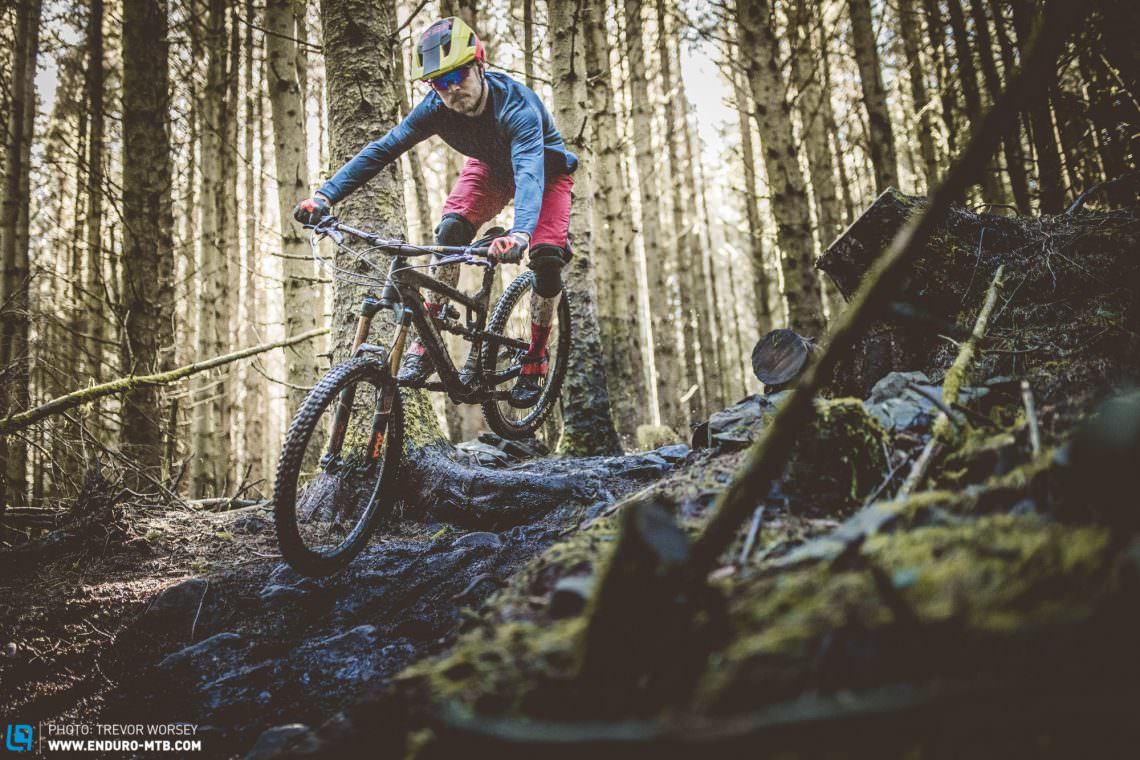
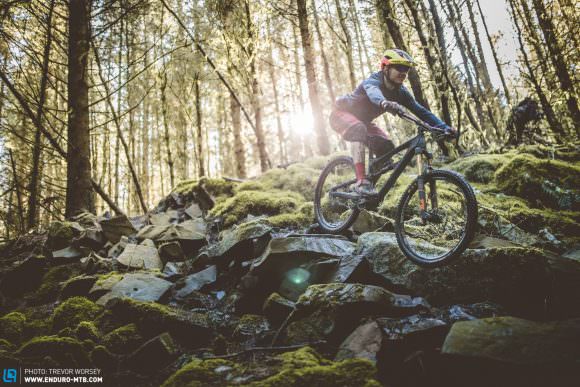

Gearboxes are a drag… or are they?
Pedalling up the hills, simple physics tells us that some power is being stolen by increased weight and drag in the gearbox, reinforced by a gentle whirring between our feet. While the Zerode does not pretend to excel at long fire-road drags, it never feels lazy, punching up sharp climbs well and happily half-wheeling its dangling derailleur siblings. The increased drag is largely offset by the fixed chain line, allowing the faux-bar suspension to be optimized to give anti-squat values that get forum-dwelling suspension nerds frothing over their keyboards. However, it’s when the bike is pointed downwards than the Zerode Taniwha reveals its superhero power.

Free your suspension, free your mind
Freed from controlling the weight of a monster cassette and derailleur, the rear suspension sticks to the ground like velcro to a blanket. Late-braking, wide-open charges, and flat-out hooligan hucks into rock gardens are where the Taniwha gets down to business. You can hammer into a turn with the balance of a ballet dancer, slam it over, then scream like a child as you are fired out the other side at a ridiculous speed. All in complete silence.
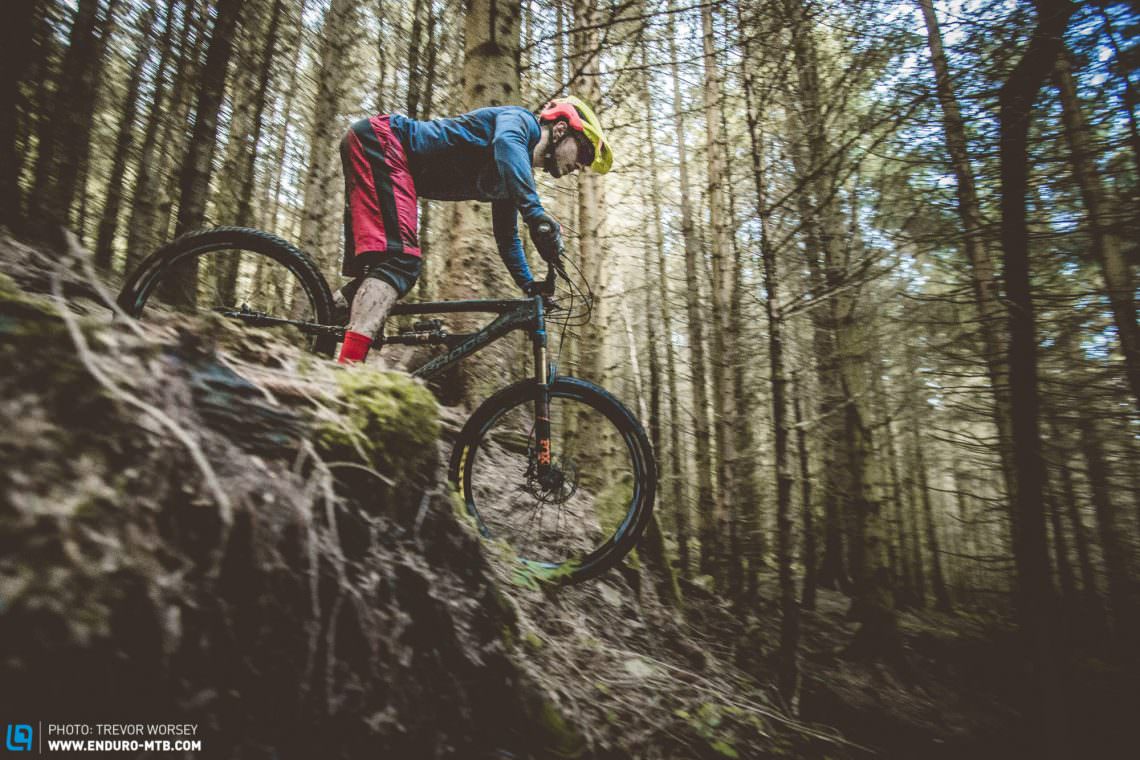 [/emaillocker]
[/emaillocker]
Not a rattle or clang… it’s like witchcraft. If a quiet bike is a fast bike, then the Taniwa is operating at warp factor nine. The lightweight swingarm chatters rapidly away behind you, noiselessly mopping up hits regardless of size. With the weight centralised between your feet, the Zerode shows a beautiful balance through flowing turns. Allowing the FOX Float Factory 36 and FOX Float X suspension to work in harmony, the Zerode is a cornering machine, a whippet in a pack of overweight labradors. Dynamic riders will love the playful and poppy nature, delivering theatrical thrills on tight trails without requiring life-threatening speeds. For those who like their kicks at autobahn velocity, a little more length in the top tube would have been appreciated.

Is the derailleur dead?
The advantages of a gearbox are real. Only last year SRAM told us the front mech was dead – is it time to bury the rear derailleur too? Almost, but maybe not just yet. At the end of testing, it’s the Pinion gearbox that is both the Zerode Taniwha’s greatest asset, and also its Achilles’ heel. The dramatic improvements in suspension function are unquestioned, as it is near silent and more reactive than anything else on the market.
For a rider who thinks outside the box, looking for a hugely capable bike that blends rugged durability with enhanced downhill performance, the Pinion-equipped Zerode Taniwha wins almost every round. It’s only the increased weight and slower GripShift shifting that dulls what, in every other aspect, is a truly explosive bike.
Conclusion
The Zerode Taniwha is a potent all-rounder, but more than that, it’s a step in the direction of a better engineered future. The relaxed shifting means it’s not quite a total revolution, but it’s pretty damn close. The Taniwha is a gladiator fighting in the shadows under the giants of conventional drivetrains. While it’s certainly no outright victory, it’s hard not to love the underdog.
Strenghts
- Beautiful integration
- Impeccable suspension performance
- Rugged durability
Weaknesses
- Shifting cannot match the bike’s pace
For more information head to zerodebikes.com!
Did you enjoy this article? If so, we would be stoked if you decide to support us with a monthly contribution. By becoming a supporter of ENDURO, you will help secure a sustainable future for high-quality mountain bike journalism. Click here to learn more.
Words & Photos:









